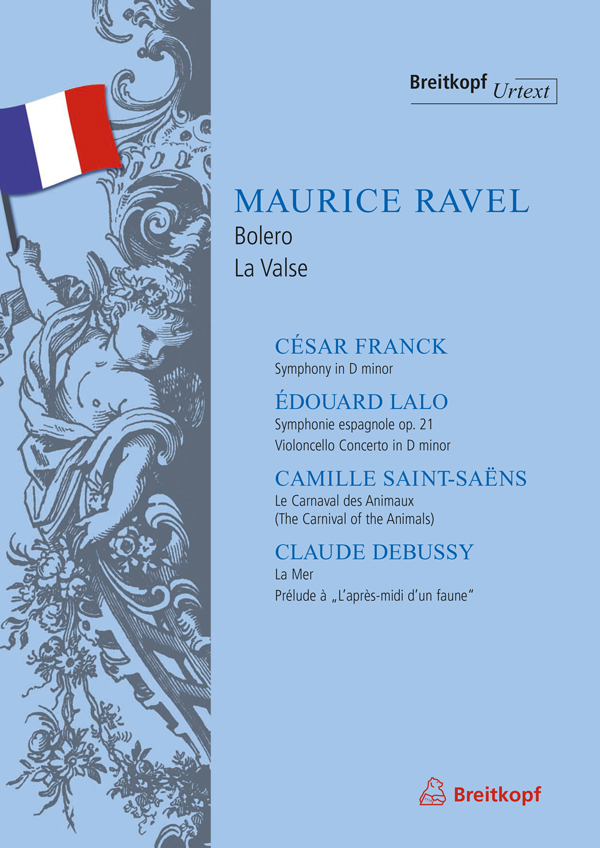MAURICE RAVEL
La Valse
La Valse is a fantastic tone painting with countless color values. It carries within it the reflection of an entire sunken era. An almost lost sound, since there is unfortunately no recording conducted by the composer. For me, it was a gift from heaven to obtain an idea of this very special, French sound ideal from conductors such as Ernest Ansermet and Charles Munch. To realize it, you need a great deal of experience, a brilliant orchestra, an acoustically suitable hall and, finally, the inspiration of the moment… Thanks to Breitkopf’s new, source-critical edition, we now have a thoroughly researched score with parts in which even the difficult page turns have become a joy.
Charles Dutoit
La Valse 12’
Poème chorégraphique pour orchestre edited by Jean-François Monnard
3(picc).3(cor ang).3(B-clar).3(dble bsn). – 4.3.3.1 – timp.perc(5) – 2hp – str
PB 5374 Score € 52,–
OB 5374 Strings € 4,80 each
Wind set € 88,–
There can be no doubt that Ravel first achieved celebrity with La Valse. And after the death of Debussy, he was hailed as France’s best-known composer. Ravel, who originally wrote La Valse as a ballet, described it as “a dancing, whirling, nearly hallucinating ecstasy, a whirlwind that increasingly whips on and exhausts the dancers who allow themselves to be overwhelmed and swept away by the waltz.” Later, however, Ravel admitted that he also understood La Valse as a kind of tragedy in the Greek sense. Jean-François Monnard focuses his attention on Ravel’s richly nuanced dynamic markings and sound ideal, which was colored above all by the kind of wind instruments used in France at that time. Monnard points out that there is evidence showing that Ravel did not enter certain changes of instruments and dynamics into the score until during the rehearsals or after the first performance of the work on 12 December 1920.
This new edition is the first Urtext edition of La Valse that compares all relevant sources. The first edition of the score, published in 1921, was used as the source. Errors and inconsistencies arising from the comparison with previous editions were corrected on the basis of the autograph score. Moreover, the handwritten and printed piano versions also provide valuable insights into the work’s origin.
To this day, the soft opening measures of La Valse still represent a challenge to the double basses and the sound technicians. This problem preoccupied the sound aesthete Ravel up to the end of his life. This is the reason for which Manuel Rosenthal, a conductor and friend of Ravel’s, decided to retouch the opening measures. This is presented for the first time in the Critical Commentary to the new edition. Rosenthal’s suggestion allows a more differentiated sound of the double basses at the beginning.
Errata
p. 19 mes. 142 Vl.II 1 dernière note : fa dièse et non sol
p. 53 mes. 402 Vl.II octava commence mes. 403
p. 74 mes. 539 Alt troisième note : do bécarre